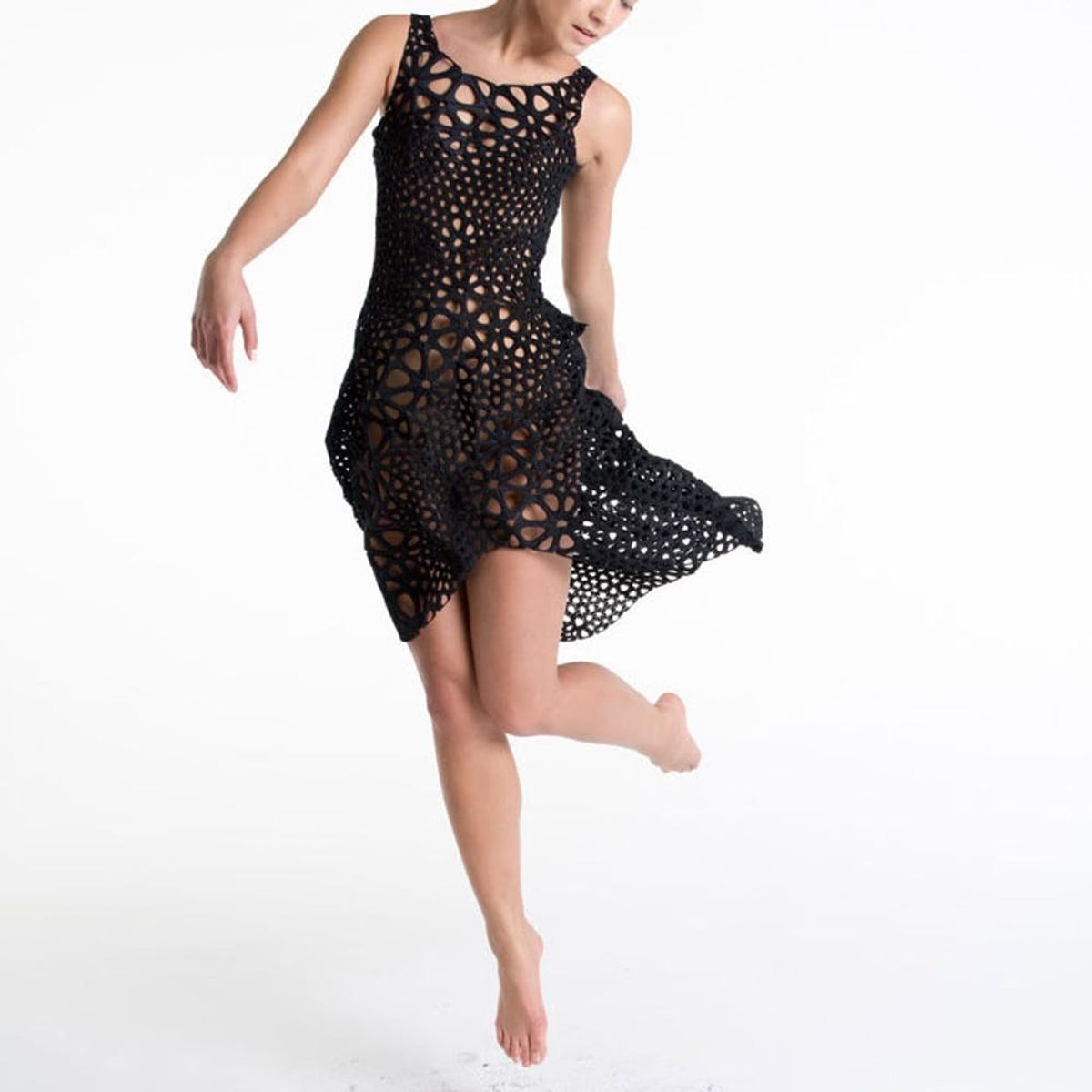Forget sequins, we want to wear a 3D printed dress on NYE :(
This 3D Printed Dress Flows like Fabric

Back in middle-school Home Ec, while we were trying to figure out how to sew ourselves a pair of basic flannel pajama pants, never in a million years did we imagine that we’d be able to set the Singer aside and 3D print a wearable plastic dress. But that’s exactly what’s possible. And no, it’s not stiff and it won’t make us look like robots while we’re walking. It’s created with Nervous System kinematics technology that allows 3D printed clothes to move just like fabric.
The filament and technology behind 3D printers are just as important as the printers themselves. There have been great advancements in filaments (*cough* magnetic filament *cough*), but kinematics tech gives makers (literal) flexibility for creating products beyond jewelry.
The clothing starts out as a 3D model in a CAD program and is broken into triangular figures through kinematics (which are like pixels, but triangles instead of squares). Each triangular “pixel” is printed with hinges on every side, which allows it to flow like fabric. And because it’s as flexible as fabric, the kinematically created garments can be printed out “pre-folded.” In other words, your average-sized 3D printer can print out a long flowy dress or an oversized sweater because this tech prints in layers — giving it the look of folded clothes and reducing the printed volume by 85%.
Currently, it takes two days and a helping hand from Shapeways to create one 3D printed dress that costs $3,000. Shapeways and Nervous System are aiming to further develop the kinematics technology in order to make printing clothes more comfortable with materials other than plastic, more cost efficient and more flexible.
Although it may seem like a little while before Nervous System’s dresses become affordable, we can’t wait to see this technology advance. Perhaps it’s a little too early… but we’re hoping we can make some light cardigans come spring.
What are your thoughts about kinematics technology? Any ideas of what you would want to create?

















